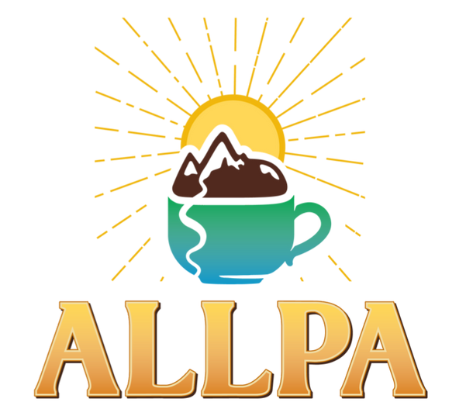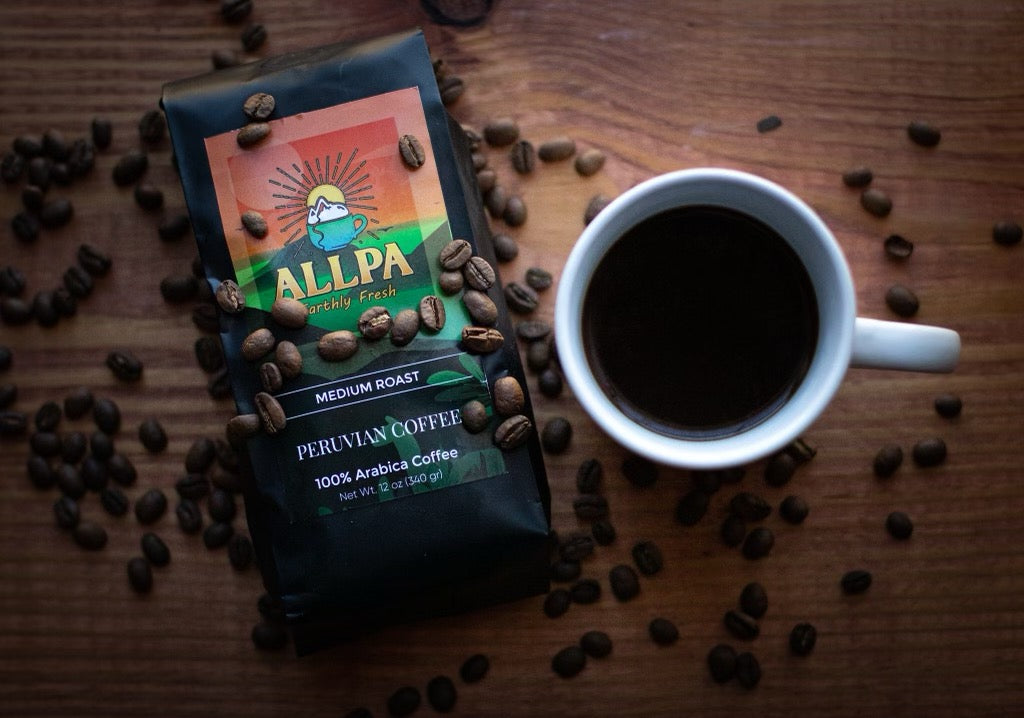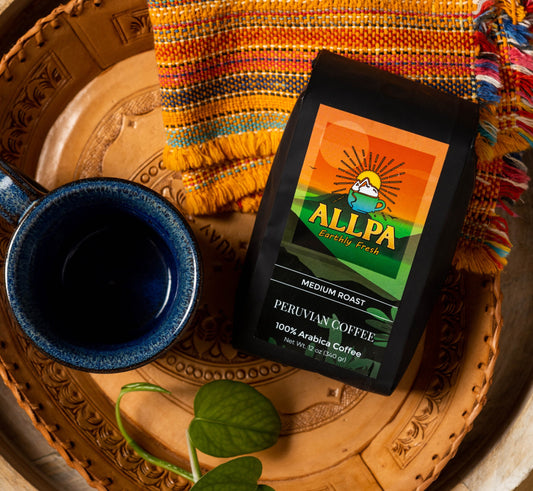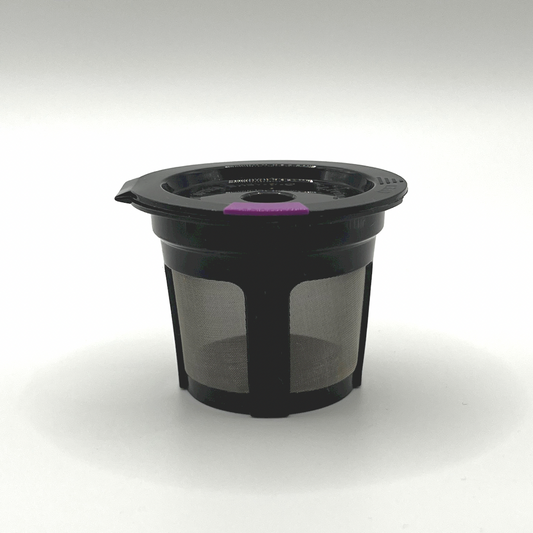1. Introduction to Peru's Coffee Heritage
Peru's coffee story began in the 18th century, and today, it's the 9th largest coffee producer in the world. That's pretty cool for a country that isn't usually the first place you think of when it comes to coffee! Peruvian coffee has been quietly making a name for itself with its mild flavor and bright acidity.
What makes Peruvian coffee special? Well, it's grown high up in the Andes Mountains, between 900 and 2100 meters above sea level. That's like growing coffee on top of a really tall building! This high altitude gives the coffee beans a unique taste that coffee lovers can't get enough of.
Key Takeaways
| Aspect | Details |
|---|---|
| Global Ranking | 9th largest coffee producer |
| Altitude | 900-2100 meters above sea level |
| Flavor Profile | Mild flavor, bright acidity |
| Main Regions | Cajamarca, Amazonas, Junín, Pasco, Cusco, Puno |
| Certifications | 70% certified (Organic, Fair Trade, Rainforest Alliance) |
Let's take a look at some key facts about Peruvian coffee:
Key Facts About Peruvian Coffee
- Global Ranking: 9th in coffee production
- Certifications: 70% certified (Organic, Fair Trade, Rainforest Alliance)
- Main Varieties: Typica, Caturra, and others
- Elevation: Grown between 1,000 and 1,800 meters
- Harvest Season: Generally April to September
- Processing Methods: Shade grown, handpicked, sun dried
- Export Volume: 4 million 60-kilogram bags annually
- Top Export Markets: United States, Germany, Belgium
- Domestic Consumption: 750 grams per capita
- Organic Production: World's leading exporter, 90,000 certified hectares
2. The Unique Geography of Peruvian Coffee Regions
Peru is like a playground for coffee plants. It has all sorts of different climates and landscapes that make each region's coffee taste a bit different. Imagine if your backyard had sunny spots, shady spots, and spots with just the right amount of rain - that's kind of what Peru is like for coffee!
The coffee grows on mountainsides that are super high up. We're talking about places that are between 900 and 2100 meters above sea level. That's higher than most roller coasters! This high altitude is one of the secrets to why Peruvian coffee tastes so good.
Here's a cool fact: the height where the coffee grows affects its taste. Coffee from higher up often tastes brighter and has more complex flavors. It's like the air up there gives the coffee beans superpowers!
The diverse geography of Peru contributes significantly to the unique characteristics of its coffee. The Andes Mountains create microclimates that vary greatly even within short distances. This diversity allows for a wide range of flavor profiles in Peruvian coffee, from the bright and fruity notes of high-altitude beans to the more balanced and nutty flavors of those grown at slightly lower elevations.
Additionally, many Peruvian coffee farms practice shade-growing techniques, where coffee plants are grown under a canopy of taller trees. This method not only protects the coffee plants from harsh sunlight but also promotes biodiversity and contributes to the complex flavor development in the beans.
3. North Peru: Cajamarca and Amazonas
Up in the north of Peru, we have two big coffee-growing areas: Cajamarca and Amazonas. These places are like the superstars of Peruvian coffee. The coffee from here is known for being super smooth and having a nice, balanced taste.
In Cajamarca, the coffee often has hints of chocolate and nuts. It's like someone sprinkled a tiny bit of chocolate powder into your cup! Amazonas coffee, on the other hand, might remind you of fruit. Some people say it tastes a bit like citrus or berries.
The farmers in these regions take really good care of their coffee plants. They use methods that are good for the environment, which makes the coffee taste even better. It's like giving the coffee plants extra love and attention!
Cajamarca is particularly known for its high-quality organic coffee. The region's fertile soil and ideal climate conditions contribute to the production of beans with a well-rounded flavor profile. Many farmers in Cajamarca have adopted organic farming practices, which not only preserve the environment but also result in coffee with a cleaner, more distinct taste.
Amazonas, with its lush rainforest environment, produces coffee with unique tropical fruit notes. The region's biodiversity influences the coffee's flavor, often resulting in cups with hints of exotic fruits like papaya or passion fruit. The coffee from Amazonas is gaining recognition for its complexity and depth of flavor.
4. Central Peru: Junín and Pasco
Moving to the middle of Peru, we find Junín and Pasco. The coffee from these areas is a bit different from what you find in the north. It's often described as having a "bright" taste, which means it's a little bit zingy on your tongue.
Junín coffee is famous for its fruity flavor. Some people say it tastes a bit like apples or pears. Pasco coffee, meanwhile, is known for being really smooth and easy to drink. It's the kind of coffee that makes you want to sit back and relax.
One cool thing about these regions is that a lot of the farmers work together in groups called cooperatives. This helps them make sure their coffee is top-notch and that they get a fair price for it. It's like a big team working together to make great coffee!
The central regions of Peru benefit from a unique combination of altitude and climate. Junín, in particular, is home to the famous Chanchamayo Valley, known for producing some of Peru's most distinctive coffees. The region's volcanic soil contributes to the coffee's bright acidity and complex flavor profile.
In Pasco, many coffee farms are located in protected forest areas, which contributes to the preservation of local ecosystems. This environmental consciousness is reflected in the clean, crisp taste of Pasco coffees, which often feature subtle floral notes alongside their smooth body.
5. South Peru: Cusco and Puno
Down in the south of Peru, we have Cusco and Puno. These places are super high up in the mountains. The coffee here grows so high that if the plants could talk, they might complain about being dizzy!
The high altitude makes the coffee from Cusco and Puno really special. It often has a strong, rich flavor that coffee experts love. Some people say it tastes a bit like dark chocolate or even has a hint of spice.
Cusco is also famous for its history. It used to be the capital of the Inca Empire! So when you drink coffee from Cusco, you're tasting something that comes from a place with thousands of years of history. How cool is that?
The extreme altitude of coffee farms in Cusco and Puno (often above 1,800 meters) results in beans that mature slowly, developing more complex sugars and acids. This slow growth contributes to the coffee's full body and intense flavors. In Cusco, you might find coffees with notes of cocoa, cinnamon, and even a subtle wine-like quality.
Puno, bordering Bolivia, produces coffee with a unique character influenced by its proximity to Lake Titicaca. The region's coffee often exhibits a bright acidity balanced with a smooth, creamy body. Some cups from Puno have been described as having a subtle, pleasant herbaceous quality reminiscent of coca leaves, a plant traditionally grown in the region.
6. The Journey from Bean to Cup
Now, let's talk about how these coffee beans get from the farm to your cup. It's quite a journey! The process starts with the harvest, which happens between April and September, depending on where in Peru the coffee is grown.
The farmers pick the coffee cherries (yep, coffee beans start out as cherries!) when they're just the right color - usually a bright, cherry red. Then comes the tricky part: processing the beans. In Peru, they mostly use two methods:
- Washed processing: The beans are removed from the cherry and washed clean before drying.
- Natural processing: The whole cherry is dried with the bean inside, which can give the coffee a fruity flavor.
After processing, the beans are dried, sorted, and packed up for their trip around the world. It's like sending the beans on a vacation before they end up in your coffee maker!
The care taken during harvesting and processing is crucial to the final quality of Peruvian coffee. Many farmers still hand-pick their coffee cherries, selecting only the ripest fruits. This attention to detail ensures that only the best beans make it to the next stage of processing.
After processing, the beans undergo a rigorous sorting process. This includes removing any defective beans and grading the coffee based on size and quality. The highest grade beans are often reserved for specialty coffee markets, while lower grades might be used for blends or instant coffee production.
7. Flavor Profile of Peruvian Coffee
So, what does Peruvian coffee actually taste like? Well, it's known for having a medium body, which means it's not too light and not too heavy. It's just right - like Goldilocks' perfect bowl of porridge!
The acidity in Peruvian coffee is usually described as mild. This means it doesn't make your mouth pucker up like when you eat a lemon. Instead, it gives the coffee a nice, bright taste that wakes up your taste buds.
Here are some flavors you might taste in Peruvian coffee:
Flavor Notes in Peruvian Coffee
Remember, everyone's taste buds are different, so you might taste something totally unique when you try Peruvian coffee!
The flavor profile of Peruvian coffee can vary significantly depending on the specific region and processing method. However, some general characteristics are often associated with Peruvian beans:
- Aroma: Often described as sweet and floral, with hints of citrus or dried fruit
- Body: Typically medium, with a smooth and creamy mouthfeel
- Acidity: Mild to medium, often described as bright or lively
- Aftertaste: Usually clean and pleasant, with lingering notes of chocolate or nuts
Many coffee enthusiasts appreciate Peruvian coffee for its balance and versatility. It's enjoyable on its own but also works well in blends, adding complexity without overpowering other flavors.
8. Certifications and Sustainability
Peruvian coffee farmers take really good care of their land and their workers. That's why a whopping 70% of Peruvian coffee is certified. But what does that mean? Well, it's like getting a gold star for doing things the right way!
There are three main types of certifications you might see on Peruvian coffee:
- Organic: This means the coffee was grown without using harmful chemicals.
- Fair Trade: This ensures that farmers get a fair price for their coffee.
- Rainforest Alliance: This certification means the coffee was grown in a way that's good for the environment and wildlife.
These certifications are a big deal because they help protect the environment and make sure farmers can make a living from growing coffee. It's like a win-win situation for everyone - including you, because you get to enjoy delicious, responsibly-grown coffee!
The high percentage of certified coffee in Peru reflects the country's commitment to sustainable and ethical farming practices. Here's a deeper look at what these certifications mean:
- Organic Certification: This involves strict regulations on pest control, soil management, and overall farm health. Organic farming practices help maintain soil fertility and protect local ecosystems.
- Fair Trade Certification: This ensures that farmers receive a minimum price for their coffee, which helps protect them from market fluctuations. Fair Trade also promotes community development projects.
- Rainforest Alliance Certification: This focuses on biodiversity conservation and sustainable livelihoods. It includes criteria for wildlife protection, water conservation, and fair treatment of workers.
Many Peruvian coffee farms are also implementing additional sustainable practices, such as water conservation techniques, composting, and using renewable energy sources. These efforts not only benefit the environment but often result in higher quality coffee beans.
9. Small-Scale Farmers and Cooperatives
Most of the coffee in Peru isn't grown on big farms. Instead, it's grown by lots of small-scale farmers. These farmers often have just a few acres of land where they grow their coffee plants alongside other crops.
To help them sell their coffee and get better prices, many of these small farmers join together in cooperatives. A cooperative is like a team where everyone works together. By joining forces, the farmers can do things like:
- Share equipment and knowledge
- Get better prices for their coffee
- Afford certifications like Organic or Fair Trade
- Learn new farming techniques
These cooperatives are a big reason why Peruvian coffee is so good. They help ensure that even small farmers can produce high-quality coffee and get paid fairly for it. It's like a big coffee-growing family!
The cooperative model has been crucial in empowering small-scale farmers in Peru. Here are some additional benefits of this system:
- Access to international markets: Cooperatives often have the resources to export directly, bypassing middlemen and increasing profits for farmers.
- Quality control: Cooperatives can implement standardized quality control measures, ensuring consistency across their members' production.
- Social impact: Many cooperatives invest in community projects, such as schools or healthcare facilities, benefiting the entire farming community.
- Preservation of traditional farming methods: Cooperatives often encourage the preservation of traditional, sustainable farming practices that have been used for generations.
The success of these cooperatives has contributed significantly to the improvement of living standards for many coffee-growing communities in Peru, while also helping to maintain the high quality of Peruvian coffee on the global market.
10. Brewing the Perfect Cup of Peruvian Coffee
Now that you know all about where Peruvian coffee comes from, let's talk about how to make it taste amazing in your cup! Here are some tips for brewing the perfect cup of Peruvian coffee:
- Use freshly roasted beans: Coffee tastes best when it's fresh, so look for beans that have been roasted recently.
- Grind just before brewing: This keeps all the flavors locked in until you're ready to brew.
- Use the right water temperature: Aim for water that's between 195°F and 205°F (90°C to 96°C).
- Try different brewing methods: Peruvian coffee works well in drip machines, French presses, and even as espresso!
Want to try some great Peruvian coffee at home? Check out Allpa Peruvian Coffee | Medium Roast | Whole Bean 12oz. It's priced at $14.99 and is described as "A True Hidden Gem with full flavor, smooth medium body, and delicate sweet completion. Notes include smooth nutty and chocolate connotations." Plus, it's sustainably and ethically sourced!
To get the most out of your Peruvian coffee, consider these additional brewing tips:
- Water quality: Use filtered water to avoid any off-flavors from tap water impurities.
- Coffee-to-water ratio: Start with a 1:16 ratio (1 part coffee to 16 parts water) and adjust to your taste.
- Brewing time: For pour-over methods, aim for a total brew time of 2-4 minutes.
- Experiment with different roast levels: While medium roasts are popular for Peruvian coffee, light roasts can highlight the bean's subtle flavors, while dark roasts bring out more chocolatey notes.
Remember, the best way to brew Peruvian coffee often depends on the specific beans you're using. Don't be afraid to experiment with different methods and ratios to find your perfect cup!
11. The Future of Peruvian Coffee
The world of coffee is always changing, and Peruvian coffee is no exception. Farmers and coffee experts in Peru are always looking for ways to make their coffee even better. Here are some cool things happening in Peruvian coffee:
- New coffee varieties: Farmers are experimenting with different types of coffee plants to find ones that taste great and grow well in Peru.
- Improved processing methods: New ways of processing coffee beans are being tested to bring out even more interesting flavors.
- Climate change adaptation: As the weather changes, farmers are finding smart ways to protect their coffee plants.
- Direct trade relationships: More coffee roasters are working directly with Peruvian farmers, which means better prices for farmers and better coffee for us!
All of these efforts mean that Peruvian coffee is likely to get even more delicious and interesting in the future. It's an exciting time to be a fan of Peruvian coffee!
The future of Peruvian coffee looks promising, with several initiatives and trends shaping its trajectory:
- Genetic research: Scientists are working on developing coffee plant varieties that are more resistant to diseases and climate change while maintaining high-quality flavor profiles.
- Specialty coffee focus: There's a growing emphasis on producing and marketing high-quality, single-origin coffees to cater to the increasing demand for specialty coffee worldwide.
- Sustainable technology: Many farms are adopting eco-friendly technologies, such as solar-powered processing equipment and water-efficient irrigation systems.
- Agrotourism: Some coffee regions are developing coffee tourism programs, allowing visitors to experience the coffee production process firsthand and creating additional income streams for farming communities.
These developments are not only improving the quality and sustainability of Peruvian coffee but also helping to secure its place as a respected origin in the global coffee market.
12. Conclusion: Why Choose Peruvian Coffee
So, why should you give Peruvian coffee a try? Well, there are lots of reasons! First off, it tastes great. With its smooth, balanced flavor and hints of chocolate and nuts, it's a coffee that's easy to love.
But it's not just about taste. When you choose Peruvian coffee, you're also supporting small farmers and sustainable farming practices. It's like your morning cup of joe is doing a little bit of good in the world!
Plus, with all the different regions and varieties, exploring Peruvian coffee is like going on a taste adventure. Each cup tells a story of the place it came from and the people who grew it.
So next time you're looking for a new coffee to try, why not pick up some beans from Peru? Your taste buds (and maybe even your conscience) will thank you!
Choosing Peruvian coffee offers a unique combination of quality, sustainability, and social impact:
- Flavor diversity: From the fruity notes of Amazonas to the chocolatey undertones of Cusco, Peruvian coffee offers a wide range of flavor profiles to explore.
- Environmental stewardship: The high percentage of certified organic farms means that choosing Peruvian coffee often supports environmentally friendly farming practices.
- Social responsibility: Many Peruvian coffee cooperatives invest in community development projects, so your purchase can have a direct positive impact on farming communities.
- Value for money: Peruvian coffee often offers excellent quality at a more accessible price point compared to some other well-known coffee origins.
- Cultural heritage: By choosing Peruvian coffee, you're participating in a centuries-old tradition and helping to preserve Peru's rich coffee culture.
Whether you're a coffee connoisseur or just someone who enjoys a good cup, Peruvian coffee offers something special. Its unique combination of flavor, sustainability, and social impact makes it a choice you can feel good about with every sip.









